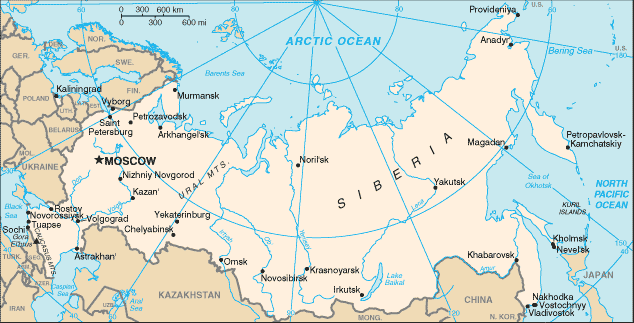By NewsDesk @infectiousdiseasenews
According to data from regional department of Rospotrebnadzor, fourteen patients have been diagnosed with Crimean-Congo hemorrhagic fever (CCHF) in Stavropol, in southwestern Russia.

Image/CIA
“According to the results of laboratory tests, the diagnosis of Crimean hemorrhagic fever was established in 14 patients from among the provisionally hospitalized, living in the Petrovsky and Blagodarnensky urban districts, in Apanasenkovsky, Arzgirsky, Krasnogvardeisky, Ipatovsky, Shpakovsky districts and in Stavropol,” the report says.
Stavropol residents are urged to observe safety measures when outdoors. It is recommended to spray clothes with repellent, and after walking to check your body for ticks. If you find a tick on yourself, contact the emergency room.
Crimean-Congo hemorrhagic fever is a widespread disease caused by a tick-borne virus (Nairovirus) of the Bunyaviridae family. The CCHF virus causes severe viral hemorrhagic fever outbreaks, with a case fatality rate of 10–40%.
Animals become infected by the bite of infected ticks and the virus remains in their bloodstream for about one week after infection, allowing the tick-animal-tick cycle to continue when another tick bites. Although a number of tick genera are capable of becoming infected with CCHF virus, ticks of the genus Hyalomma are the principal vector.
The CCHF virus is transmitted to people either by tick bites or through contact with infected animal blood or tissues during and immediately after slaughter. The majority of cases have occurred in people involved in the livestock industry, such as agricultural workers, slaughterhouse workers and veterinarians. Human-to-human transmission is possible.
- India: Two human rabies deaths reported in Dimapur, Nagaland
- Lassa virus vaccine trial in Nigeria, Liberia and Sierra Leone
- CDC investigates Listeria outbreak linked to precooked chicken
- Delta variant is dominant coronavirus strain in Wales
- Finland: COVID-19 rise linked in part to football fans returning from Russia
- Nigeria: Borno state reports nearly 100 measles deaths

